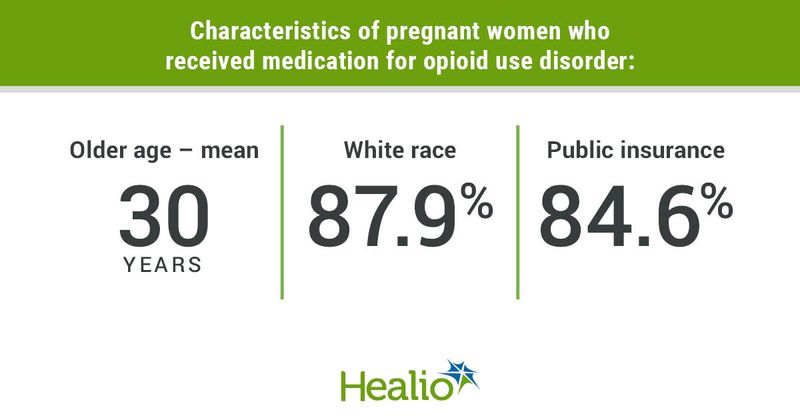July 03, 2023
2 min read
Source/Disclosures
Disclosures:
Miele reports no relevant financial disclosures. Please see the study for all other authors’ relevant financial disclosures.
Key takeaways:
- Pregnant women on medication for opioid use disorder were more likely to be older, white and have public insurance vs. those without.
- The goal of MAT-LINK is to identify and improve health outcomes in this population.
A surveillance network monitoring maternal, infant and child outcomes tied to medication for opioid use disorder during pregnancy showed different sociodemographics between medication for opioid use disorder and those without, data show.
“This report provides a detailed description of a sentinel surveillance system for medication for opioid use disorder during pregnancy, including data sources, types of variables, methods for secure data transfer and storage and the process for making data available for future analyses,” Kathryn Miele, MD, Gilstrap fellow in the division of birth defects and infant disorders at the National Center on Birth Defects and Developmental Disabilities at the CDC, and colleagues wrote. “In addition, selected population characteristics by medication for opioid use disorder status from clinical sites are described and the results of a surveillance evaluation are presented.”

The Maternal and Infant Network to Understand Outcomes Associated with Medication for Opioid Use Disorder During Pregnancy (MAT-LINK) is a surveillance network of seven clinical sits in the U.S. that was established in 2019. MAT-LINK collects demographic and clinical information about people with opioid use disorder during pregnancy to understand the effect of medication for opioid use disorder on outcomes and provide information for clinical care and public health interventions.
In this surveillance summary, published in Morbidity and Mortality Weekly Report Surveillance Summaries, the MAT-LINK surveillance network obtained data on 5,541 reported pregnancies (mean age, 29.7 years) with a known pregnancy outcome from 2014 to 2021 among people with opioid use disorder of which 4,381 received medication for opioid use disorder.
Overall, 86.3% of women were white, 25.4% were Hispanic, 5.8% were Black, 4.7% were of other races, 2.6% were American Indian/Alaska Native and less than 1% were Asian. Of all included women, 81.6% had public insurance, 15.9% had private insurance, 2.3% had no insurance and less than 1% had other insurance. In addition, 84.4% lived in or within reasonable commuting distance to urban areas.
Women who received medication for opioid use disorder during pregnancy had a higher likelihood of being older (30 vs. 28.7 years), white (87.9% vs. 80.3%) and having public insurance (84.6% vs. 70.5%) compared with women without.
According to the researchers, having a flexible public health surveillance system to adapt to changing information needs and operating conditions with little additional time, personnel or allocated funds will help provide information to support clinical and public health guidance focusing on improving health outcomes in pregnant women with opioid use disorder and their offspring.
“The preliminary findings are that pregnant persons with opioid use disorder who are taking medication for opioid use disorder are more likely to be older and white and to have public insurance,” the researchers wrote. “These findings are important markers of possible differences in health care access and clinical care.”





